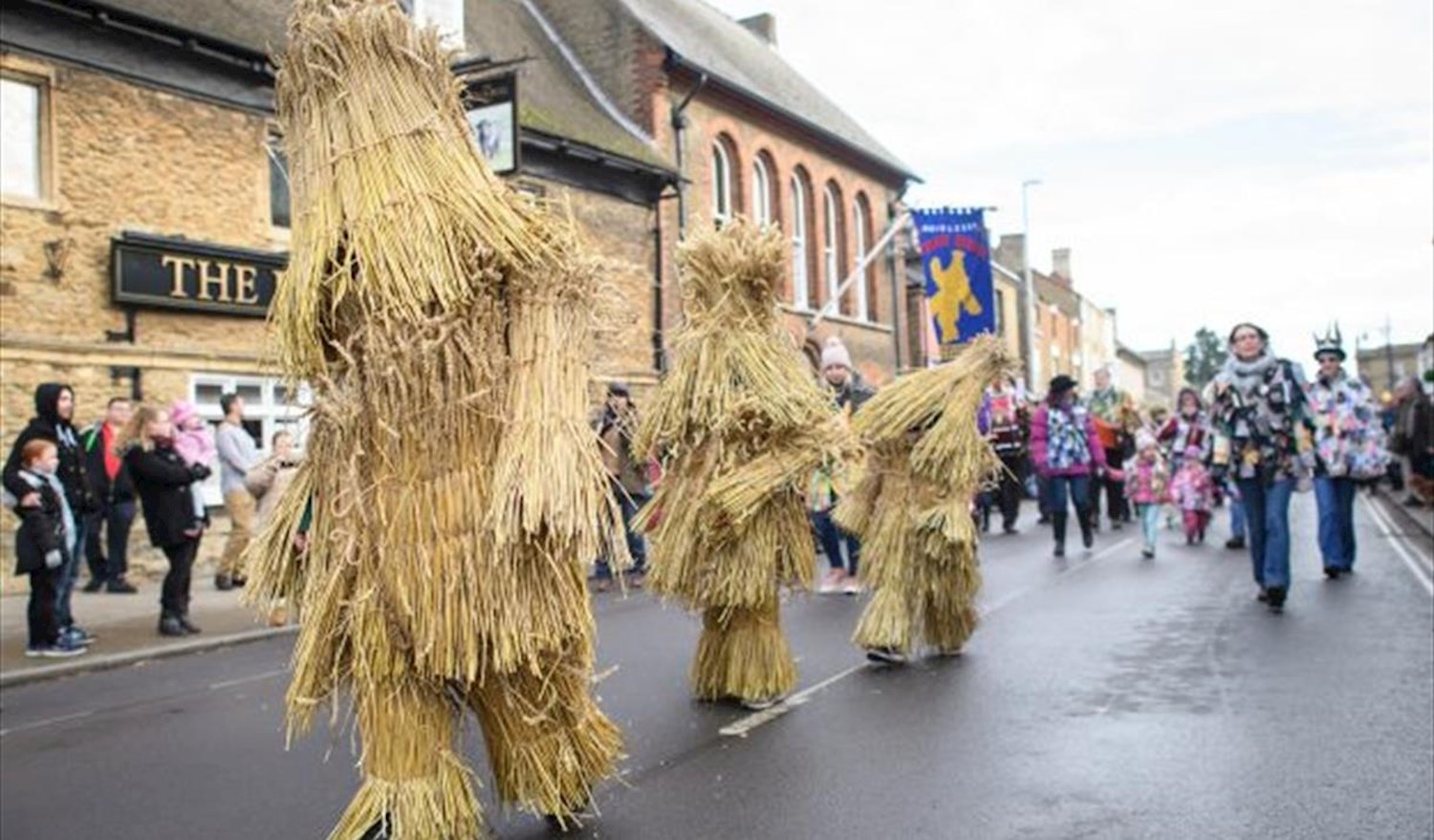Attractions
Straw Bear Festival
The wicker bear is a traditional character that appears in carnival processions or as a separate seasonal custom in parts of Germany, mainly at Shrovetide but sometimes at Candlemas or Christmas Eve.
People playing bears either wear clothes made of straw or are actually wrapped in straw. The straw used may be wheat straw, rye straw, oat straw, spelt or straw. Branches and modern artificial materials are also used. Bears may be relatively realistic in appearance, with detailed masks, or fully rounded heads, or they may be more abstract, with slender heads resembling a long, narrow pod.
History
Wicker bears may have been derived from the medieval carnival figure of the wild man. They were also interpreted by early folklore as personifications of winter, and their appearance in late winter or early spring was seen as a ritual expulsion of winter from society. Others think that they were simply intended to represent real "dancing" bears that used to be taken from place to place for entertainment.
At first, the bears were accompanied by groups of costumed crews and musicians, visiting houses and begging from house to house. One of the earliest known sources is from Wurmlingen in 1852. In most cases they were accompanied by gifts of eggs, pork and flour (it may be noteworthy that these three were white), or Fasnetsküchle (carnival eggs) or money. At the end of the day, the group would share or consume their gifts in a tavern. This traditional style (begging) is no longer practiced. Most bears now appear as part of carnival processions, although there are some that still remain independent of the carnival itself.
Straw bears appeared especially in agricultural societies. Although this tradition is no longer as common as it once was, wicker bears are still found in Baden-Württemberg, Hesse (especially Vogelsberg), Lower Saxony, Bavaria, the Honseruck and Eifel regions of Rhineland-Palatinate, and Thuringia.
Today they are particularly associated with the "Swabian-German Carnival" or Fastnacht in southwestern Germany in the area between the upper Neckar River and Lake Constance in Baden-Württemberg. There used to be straw bears in Pomerania, Rhineland and West Germany. In some places, the straw-clad figures are not intended to represent bears and are simply known as straw men.
The decline in popularity of reed characters in carnival today is largely due to the difficulty of obtaining reeds of suitable length and quality. Modern farmers generally prefer cultivars with shorter stubble or use chemical sprays to shorten stubble so that their crops are less susceptible to storm damage. Synthetic materials have replaced straw in a few places. [citation needed] In other places, such as Hirschauer, where the Äschadreppler is traditionally covered with hay, crops are specially planted to ensure a suitable supply of straw for the garments.
Modern wicker bear clothes may be kept year after year. Previously they were often burned at the end of the day they were used. It still happens in some places.
